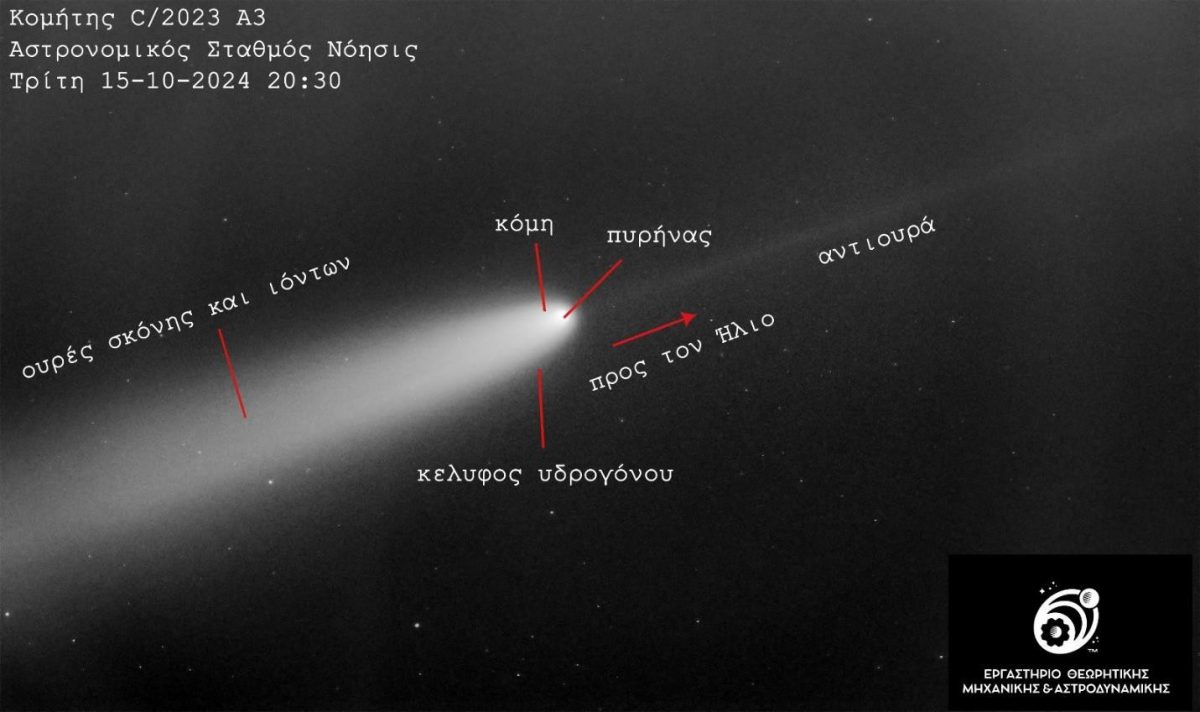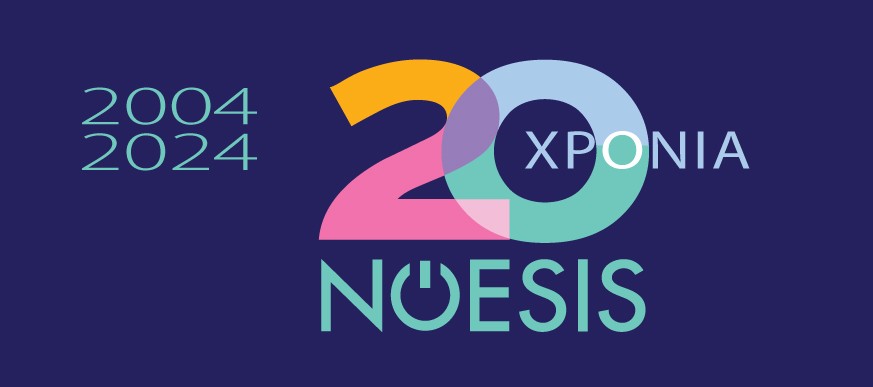Comet Tsuchinshan–ATLAS from the Aristotle University telescope at NOESIS

In recent days (October 2024), a spectacular celestial visitor has made an appearance in the afternoon sky. This is comet C/2023 A3 (Tsuchinshan–ATLAS), which was discovered in January 2023 by the Tsuchinshan Observatory in China and subsequently confirmed by the ATLAS program in South Africa (Sutherland). The comet passed through its perihelion on September 27, and on October 12 reached its closest point from Earth, before continuing its journey to the outer solar system. Initial calculations showed that the next time it will approach the planet will be about 80,000 years from now. Newer calculations suggest that, after its close transit through the vicinity of terrestrial planets and the gravitational pulls exerted on it, its orbit may have turned into an exaggeration, meaning it will be hurled out of the solar system and never reappear. The comet’s ultimate fate will largely be determined by the pulls it receives from the major planets and galactic tide as it heads back toward the Oort cloud, a few thousand times the Earth-Sun distance.
https://en.wikipedia.org/wiki/C/2023_A3_(Tsuchinshan%E2%80%93ATLAS)#
This rare astronomical phenomenon attracted the interest of amateur and professional astronomers worldwide. Among the observations, the comet was recorded by the Aristotle University of Thessaloniki Astronomical Station at Noesis on the evening of Tuesday 15 October. The observation was made by undergraduate students of the Department
of Astrophysics, Astronomy and Engineering of the School of Physics of the Aristotle University of Thessaloniki, A. Megoudis and T. Poultourtzidis, with the final image resulting from an overlay of 30 shots, each with an exposure time of 10 seconds. Comets are small celestial bodies, mostly made of ice, dust and rocky material, originating from the extremes of the solar system. The image shows all the features that make comets unique and Impressive. As they approach the Sun, heat evaporates their icy materials, forming a bright “shell,” the coma. At the center of the coma is the nucleus, the compact part of the comet, which can have a diameter of a few hundred meters to several kilometers. Comets often have two tails with different composition and origin. The first, brightest and visible to the naked eye, is the dust tail, formed by dust particles ejected from the surface of the core due to evaporation. The second is the ion tail, thinner and fainter, which is due to the production of ions on the surface of the core, due to the incidence of the solar wind. Although these two tails usually have different directions, as the second (ion) always points opposite to the Sun, in the case of C/2023 A3 they appear to extend almost parallel, opposite to the Sun, due to the very recent perihelion transit of the orbit.
